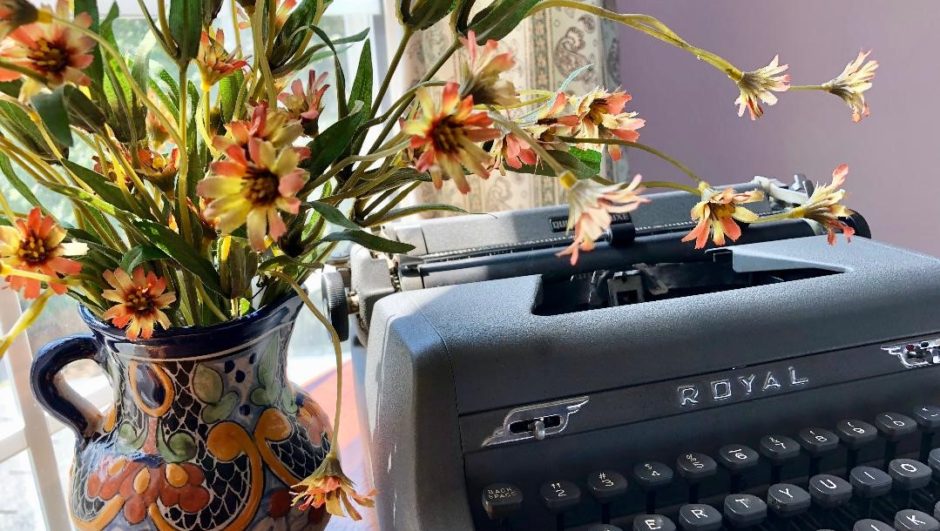By Linda Harris Sittig
When you’ve developed an infection and the doctor prescribes penicillin, what image comes to mind?

A needle, some pills, perhaps the pink medicinal liquid?
How about a cantaloupe?
Penicillin was discovered in 1928 by Scottish scientist Alexander Fleming. However, because the antibiotic was so difficult to extract from the mold that created it, only a handful of people received the antibiotic within the first decade of its availability.
The creation of penicillin was one of the greatest medical creations of the 20th century. Before, people with life-threatening bacterial infections did not survive: like one of my grandfathers.
But it would take the groundbreaking work of Margaret Hutchison to enable the pharmacology companies to mass-produce this life-saving drug.
Margaret’s Story
Born on October 27, 1910, in Houston, Texas, Margaret’s father was a clothing store owner, and her mother was a housemaker. Even from childhood, Margaret showed a vivid interest in science. She graduated with a Bachelor of Science from Rice Institute (Texas) in 1932 and a Ph.D. in chemical engineering from M.I.T. (Boston) in 1937. At the age of 27, Margaret was the first American woman to earn a Ph.D. in chemical engineering. Decades later, she would become the first female member of the American Institute of Chemical Engineers.
After finishing her Ph.D., she married William C. Rousseau, whom she met while working in Boston for E.B. Badger, a design company in the chemical engineering industry. While working for Badger, Margaret designed a production process for synthetic rubber. Next, she helped to develop the process of high-octane gas for aviation fuel—a boon for the American military in WWII.
Intrigued by the challenge of mass-producing penicillin, she turned to the research showing how mold from cantaloupes was an effective source for extracting the necessary ingredients to produce the anti-bacterial drug.
First, her research team revised a fermentation process with Pfizer Pharmaceuticals. Then, she took her team to Brooklyn, N.Y. where they converted an old ice factory into a penicillin production facility.
The challenge and the difficulties were enormous, but they successfully developed a deep-tank fermentation process that could generate large quantities of mold, readily available to be made into penicillin.
Margaret continued to collaborate with other scientists using her research on fermentation coupled with the petrochemical process of engineering to help companies mass produce penicillin under the auspices of the U.S. War Production Board.
The Legacy of Margaret’s Work
In the first half of 1944, her research led to the production of almost 2.3 million doses of penicillin. Just a few weeks later came the invasion of Normandy that Americans call D-Day. Penicillin saved countless lives of the injured.
The estimate of how many soldiers’ lives were saved by penicillin in WWII is fifteen percent. Compare that to the American Civil War, where 3/5 of the Union troops and 2/3 of the Confederate troops died from infectious bacterial disease.
After WWII, penicillin was made available to the general public on March 15, 1945.
Scientists Alexander Fleming, Howard Florey and Ernst Chain shared the 1945 Nobel Prize in Medicine for developing penicillin. Dorothy Hodgkin received a Nobel Prize later for her discovery of the structure of penicillin.
But it was the legacy of Margaret Hutchinson Rousseau that brough penicillin to the people.
While we wait in anticipation for a vaccine for Covid 19, remember Margaret and the lowly cantaloupe. Sometimes sought-after results come from surprising sources.
Thank you to Cort Johns, a blog follower from the Netherlands who alerted me to Margaret’s story.
If you are not yet a follower of this blog, join the other 1167 subscribers by signing up on the right sidebar. You can also follow me on Twitter @LHsittig, Instagram @Lhsittig, my webpage www.lindasittig.com, and on Amazon www.amzn.com/1940553024.

Thanks for these fascinating stories of women who have made a difference.
You are welcome, Darlene. I really love finding them! Margaret was a total unknown to me. And cantaloupes! Who knew?
linda:)
Amazing! I probably owe my life to her—yet I never heard the name before your blog! It may have been 1946 that my father was granted emergency leave to come and say goodbye. I was hospitalized and given penicillin injections every four hours as a very sick pre-schooler. Thanks to penicillin, I’m still here.
Well, Dixie, thank goodness! And the facts say it was March 1945 when penicillin was made public. Whew!
linda:)
I have enjoyed all your blogs, but this person was totally new to me. The timing for this one is specially significant.
Thanks for it.
Thanks, Marilyn, I know what you mean about timing!
linda:)
As always, thank you so much for the inspiring, interesting story.
Thanks, Natalie, I love finding these women! BTW, working on a new book about western MD:)
linda:)
I feel penicillin saved my life as in 1945 At the age of 6 I got double penmonia and the red measles.
I had A
an Aunt who was a nurse and she came and stayed with us and gave me shots every 4 hours for I don’t remember how long it was. Seemed like for ever.
I feel so fortunate.
I really do enjoy your articles. Also I especially enjoy your books. Are you planning on writing another book any time soon. I live in Leesburg. My sister sends me your posts she lives in Hamilton.
Hi Pat, since penicillin was only made available to the public in March of 1945, you were one lucky little girl! You can sign up to be a follower of the blog, just go on the blog http://www.strongwomeninhistory.com and scroll down the right-hand side till you see the email sign up. I can also put you on my email notification list, if you like. And yes, I am almost finished with my next book, this one though is nonfiction about the 1964 B-52 crash in Maryland with nuclear bombs on board! Thank you for your kind comments.
linda:)